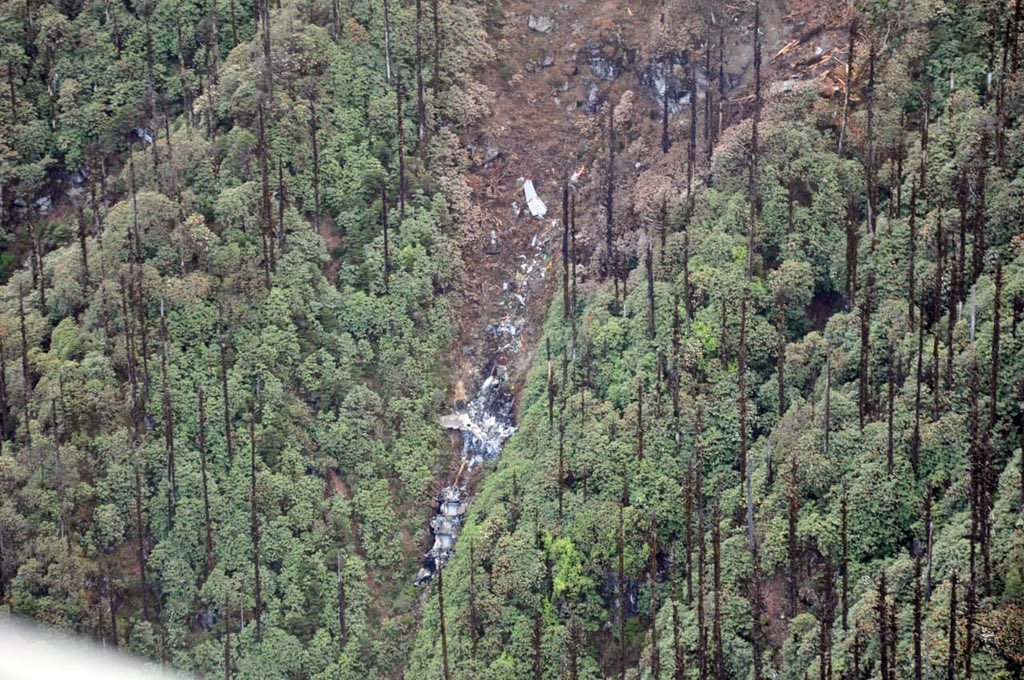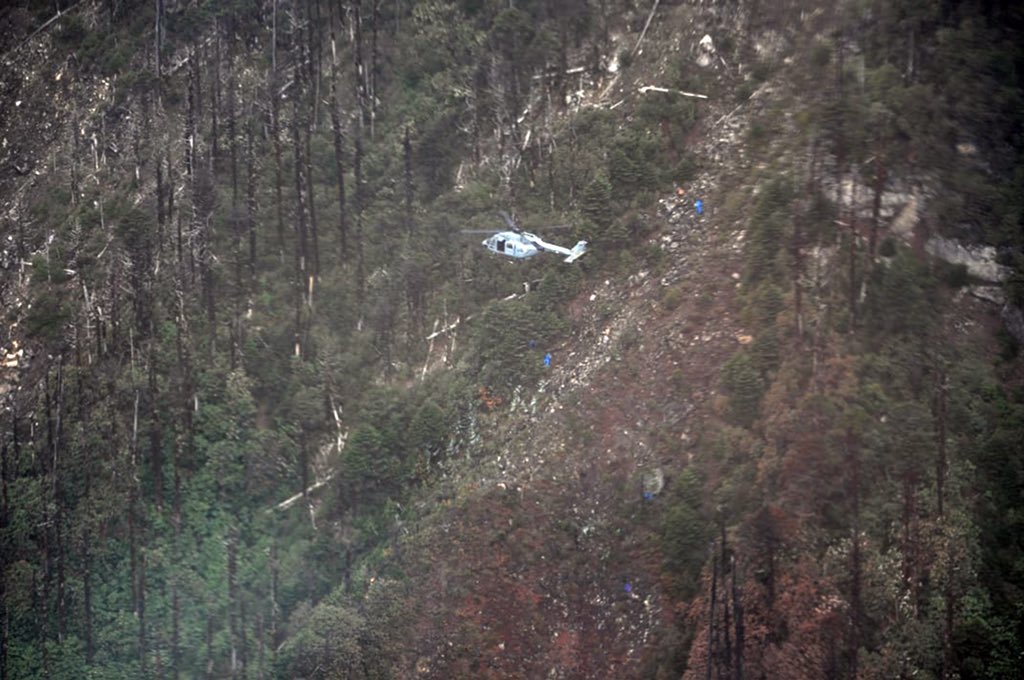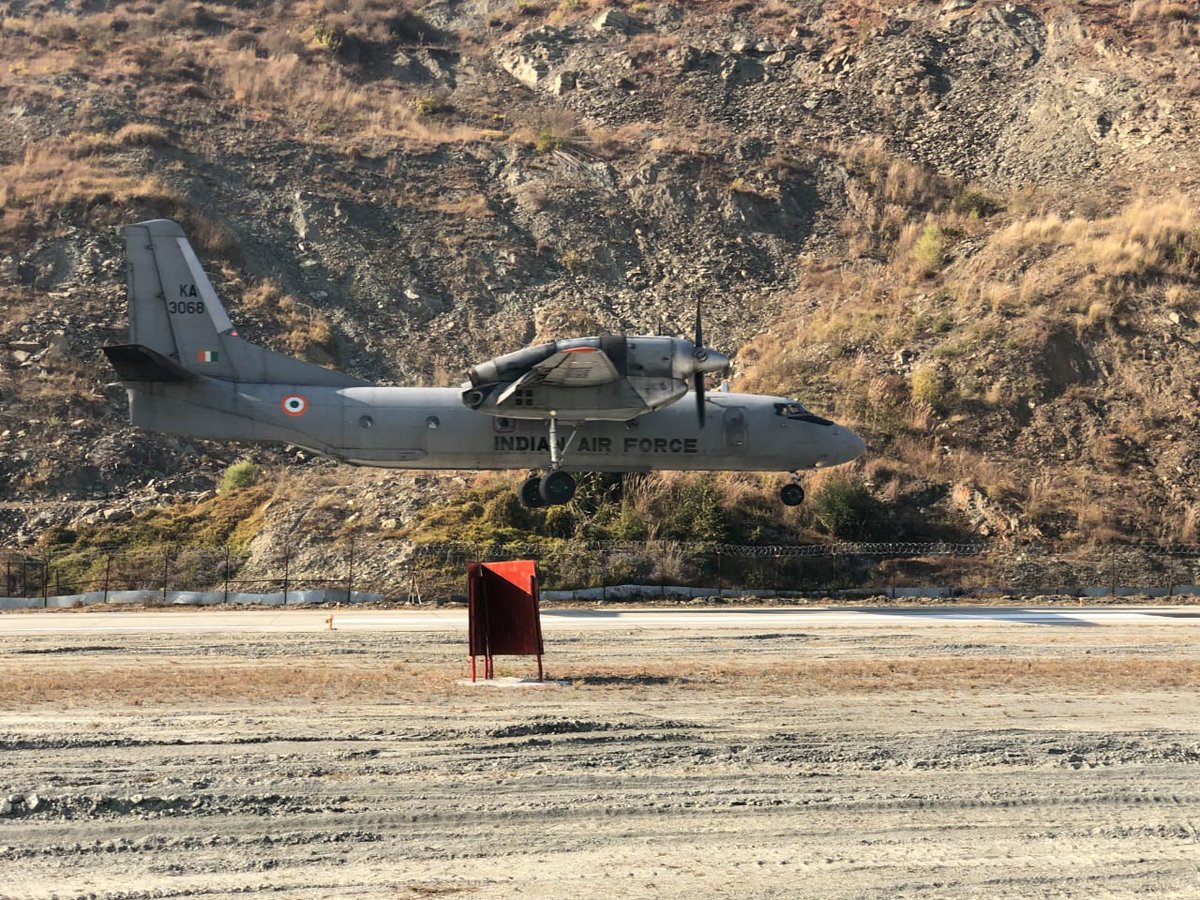
Early in the afternoon of June 11, an Indian Air Force Mi-17 helicopter spotted it. Through wisps of persistent cloud, the scattered debris of the wreckage of an aircraft that had disappeared from radar eight days earlier. The IAF was prepared to spend weeks searching for the wreckage if necessary — it was deeply aware of how difficult it was likely to be to locate the lost An-32 Tail No. K2752, given it was dealing with terrain with a notorious appetite for aircraft and some of the most whimsical weather in the world. Hovering at 13,000 feet, the sight of the debris at least meant the story of the tragedy could begin to be told.

One of the first things the helicopter crew noticed was that the An-32 had impacted the mountain — the highest feature in an area of Arunachal Pradesh replete with towering peaks — just 200 feet below the summit. An officer who was part of a helicopter flight following the sighting tells Livefist, “The An-32 may have been trying to gain altitude and climb out over the mountain. The fact that it impacted just 200-250 feet below the peak means it was very close.”

The flight on June 3 from Jorhat to the advanced landing ground in Mechuka was a routine mission to a forward area. Taking into account valley flying typical of the area, weather en route was deemed to be acceptable for the flight. The permutations of what finally took a highly proficient crew so tragically into a mountainside will only be clear after a painstaking Court of Inquiry (COI), but one possibility that presents itself instantly is a sudden change of weather and the possibility of a newly formed cloud deck moving in — and not being predicted before or during flight. That would support the theory that this wasn’t an uncontrolled crash into the mountainside, but rather a controlled flight into terrain (CFIT) — a situation where the pilots were fully in control of the aircraft and were unaware of the looming disaster until too late, at which point attempts to avoid it prove futile. Which brings us to another question that has dogged the tragedy through the eight days that the aircraft remained untraceable.
Why, people justifiably asked, was it so difficult to find the missing An-32? Why did it take 8 days to locate? Didn’t the aircraft have an emergency locator transmitter (ELT)? Why didn’t it trigger? The An-32 in question was fitted with one ELT. This wasn’t an upgraded airframe — upgraded An-32s are fitted with an additional ELT to increase the possibility of at least one firing. IAF officers that Livefist spoke to say the aircraft may have impacted the mountain in a climb, while it was trying to clear the peak. This impact, enough to destroy the aircraft and tragically kill its crew, was ironically insufficient in terms of g-forces to activate the ELT. The ELT on the An-32 that crashed required approximately 20g to trigger. Unless there was a more serious technical malfunction in the emergency equipment, this is being seen as a possibility.

The difficult retrieval of the An-32 wreckage for forensic accident analysis is currently on, and the full picture of what happened can only necessarily happen once professionals from the IAF have a chance to study every aspect of the tragedy. With the aircraft’s flight data recorder and cockpit voice recorder recovered, the team has a chance to put together the aircraft’s final moments — including decision-making in the cockpit. Crash investigations have been known to topple prima facie indicators in final conclusions.
As the investigation begins into what went wrong, it can be nobody’s case that the An-32 is an unsafe aircraft. Procured since the 1980s, it has earned its place as a tactical transport workhorse, loved by its crew and admired for its ability to get out of sticky situations. When it arrived in the eighties, it was a welcome shift from the earlier transports operated by the IAF. Much of the An-32’s reputation for reliability still holds. But the case to keep it deployed for such missions — and for missions over water — has drastically thinned. An IAF An-32 that went missing in July 2016 over the Bay of Bengal — an upgraded airframe fitted with two ELTs — has never been traced.

Flying in the aggressively whimsical weather of the North East, it is crucial that aircraft are able to climb out of valleys as quickly as possible so they can fly well above the weather, if possible avoiding it entirely. For all the An-32’s excellent qualities, its performance parameters and ‘drift-down altitude‘ sometimes make this difficult, especially with large cargo loads. Livefist learns, therefore, that this month’s crash has persuaded the IAF to take a tough decision — it will unburden to the extent possible the An-32 fleet from air logistics flight in the north-east and for flights over ocean. Doing this will be a complex and multi-pronged effort that brings other assets into the works (the C-130J, CH-47F Chinook helicopters and, in the future, Airbus C295 aircraft when they are ordered) and a possible reworking of the logistics matrix to optimise the use of other aircraft. The IAF sees the looming changes as an imperative — 2019 has been one of the IAF’s worst years in terms of loss.
Bureaucratically stalled for years, the procurement of Airbus C295 aircraft is likely to get a big nudge out of inertia in the aftermath of the An-32 tragedy. Livefist can confirm that the Indian Air Force has reiterated urgency and indicated to the new leadership at the Ministry of Defence that cost negotiations on the deal have been completed. The C295 aircraft are intended to replace over 50 British-origin HS748 Avro transports, not the An-32, though it is certain that the C295 — which sports a logistics-critical rear ramp like the An-32 — will take over freight duties in the north-east when inducted.
India happens to be the only country that operates the An-32 in such large numbers — well over 100 aircraft. While the fleet is still in the process of being upgraded, the aircraft’s maker, Ukraine’s Antonov, has been attempting to pitch the An-32’s successor, the higher performance An-132, for years to the IAF, but without success so far. The company clearly sees enough of an opportunity, considering it brought an An-132 to the Aero India show this year for the first time.
Procurements of more capable aircraft will necessarily only be long term solutions. For the moment, the IAF doesn’t have the luxury to change things abruptly. And as a troubling accident investigation begins, the very core of the IAF and government could be under test.
Further viewing: On the day the wreckage was sighted, Livefist editor Shiv Aroor did a television discussion with two former Indian Air Force flight safety directors on the accident and what may have happened.
https://youtu.be/m_541zl1qcE

CFIT due to lack of TAWS. This is almost criminal in today’s day and age and shame on IAF for not having such basic equipment onboard every aircraft. GPS based TAWS costs little and can be easily fitted to any aircraft.